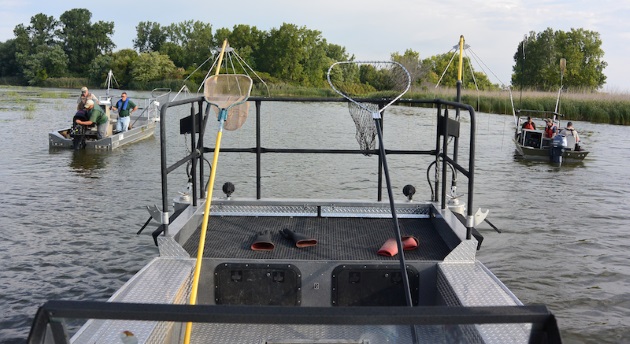Management options to prevent introduction generally can be categorized as prevention actions and development of deterrence technology. Investment in preventative measures will reduce the number of bigheaded carps that could enter the Great Lakes, thereby assisting long-term efforts by reducing the cumulative damage to the Great Lakes. The table below categorizes the prevention and prevention technology management options being examined.
| General Management Categories | Specific Actions |
|---|---|
| Risk Assessment |
|
| Prevention |
|
| Development of prevention technology |
|
Management options to prevent establishment of bigheaded carps in the Great Lakes can be categorized generally as monitoring actions and development of monitoring technology that allows managers to rapidly detect early arrivals to these water systems. These critical actions allow management to delineate the current distribution of bigheaded carps in nearby watersheds and determine where removal and other preventative measures should occur. This also helps prevent movement toward the Great Lakes and would help with rapid removal of any individuals already within the Great Lakes. The table below categorizes the monitoring and monitoring technology management options being examined.
| General Management Categories | Specific Actions |
|---|---|
| Risk Assessment |
|
| Development of monitoring technology |
|
| Monitoring for early detection |
|
| Response |
|
It is necessary to investigate long-term control methodologies that can effectively eliminate Asian carp species or prevent their movement while minimizing damage to native species ecology. Development of these methodologies requires investigation and/or laboratory development and testing before deployment in the field. However, species-specific and permanent control tools are often necessary for successful long-term control of source populations.
